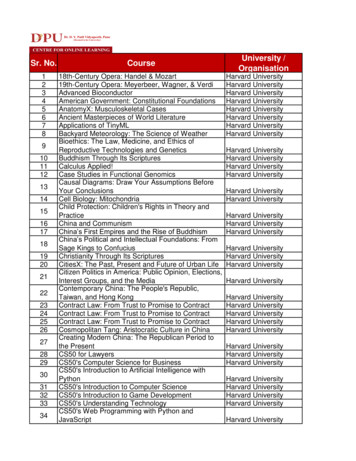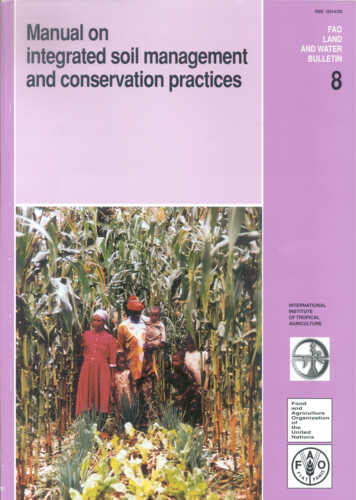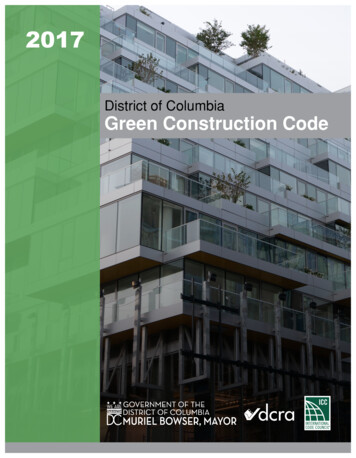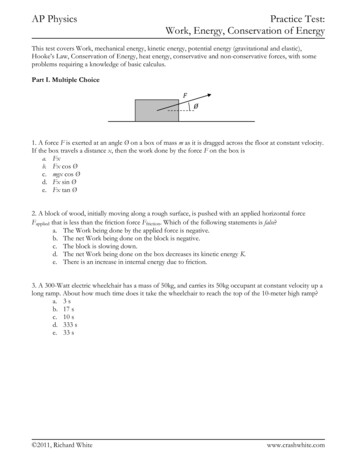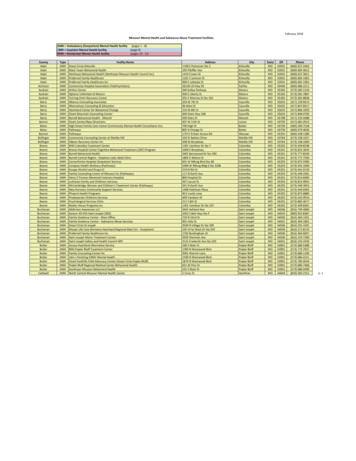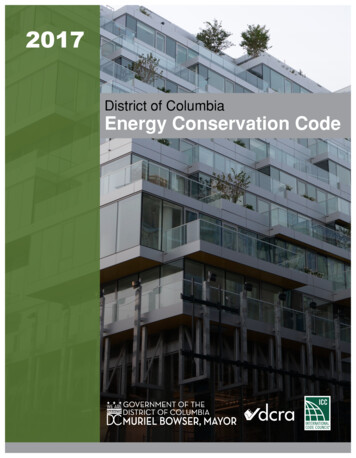
Transcription
2017District of ColumbiaEnergy Conservation Code
2017District of ColumbiaEnergy Conservation Code
2017 District of Columbia Energy Conservation CodeFirst Printing: September 2020COPYRIGHT 2014International Code Council, Inc. (for 2015 International Energy Conservation Code )COPYRIGHT 2020Government of the District of Columbia (for new text)ALL RIGHTS RESERVED. This 2017 District of Columbia Energy Conservation Code contains substantial copyrighted materials from the 2015 International Energy Conservation Code , third printing, which is a copyrighted work owned by the International Code Council, Inc. (“ICC”). Without advance written permission from the ICC, no part of this book may be reproduced,distributed or transmitted in any form or by any means, including, without limitation, electronic, optical or mechanical means (byway of example, and not limitation, photocopying, or recording by or in an information storage retrieval system). For informationon use rights and permissions, please contact: ICC Publications, 4051 Flossmoor Road, Country Club Hills, IL 60478. Phone 1888-ICC-SAFE (422-7233).The 2017 District of Columbia Energy Conservation Code contains substantial copyrighted material from the ANSI/ASHRAE/IESStandard 90.1—2013, which is a copyrighted work owned by ASHRAE. Without advance written permission from the copyrightowner, no part of this book may be reproduced, distributed or transmitted in any form or by any means, including, without limitation, electronic, optical or mechanical means (by way of example, and not limitation, photocopying, or recording by or in an information storage retrieval system). For information on permission to copy material exceeding fair use, please contact: ASHRAEPublications, 1791 Tullie NE, Atlanta, GA 30329.ASHRAE has not investigated nor participated in the creation of this 2017 District of Columbia Energy Conservation Code,which contains substantial material from ANSI/ASHRAE/IES Standard 90.1—2013 and ASHRAE expressly disclaims any duty toinvestigate any product, service, process, procedure, design, or the like that may be described herein. The appearance of any technical data or editorial material in this publication does not constitute endorsement, warranty, or guaranty by ASHRAE of anyproduct, service, process, procedure, design, or the like. ASHRAE does not warrant that the information in this publication is freeof errors, and ASHRAE does not necessarily agree with any statement or opinion in this publication. The entire risk of the use ofany information in this publication is assumed by the user.Trademarks: “International Code Council,” the “International Code Council” logo, “ICC,” the “ICC” logo, “InternationalEnergy Conservation Code,” “IECC” and other names and trademarks appearing in this book are registered trademarks of theInternational Code Council, Inc., and/or its licensors (as applicable), and may not be used without permission.PRINTED IN THE USA
PREFACEBackgroundThe 2017 District of Columbia Construction Codes, effective May 29, 2020, consist of the following12 codes: 2017 District of Columbia Building Code [2015 edition of the International Building Code published by the International Code Council (ICC) as amended by the District of ColumbiaConstruction Codes Supplement of 2017 (DCMR 12A, Building Code Supplement)].1 2017 District of Columbia Residential Code [2015 edition of the International ResidentialCode published by the ICC as amended by the District of Columbia Construction CodesSupplement of 2017 (DCMR 12B, Residential Code Supplement)]. 2017 District of Columbia Electrical [2014 edition of the National Electrical Code publishedby the National Fire Protection Association (NFPA) as amended by the District of ColumbiaConstruction Codes Supplement of 2017 (DCMR 12C, Electrical Code Supplement)]. 2017 District of Columbia Fuel Gas Code [2015 edition of the International Fuel Gas Code published by the ICC as amended by the District of Columbia Construction Codes Supplement of 2017 (DCMR 12D, Fuel Gas Code Supplement)]. 2017 District of Columbia Mechanical Code [2015 edition of the International MechanicalCode published by the ICC as amended by the District of Columbia Construction CodesSupplement of 2017 (DCMR 12E, Mechanical Code Supplement)]. 2017 District of Columbia Plumbing Code [2015 edition of the International PlumbingCode published by the ICC as amended by the District of Columbia Construction CodesSupplement of 2017 (DCMR 12F, Plumbing Code Supplement)]. 2017 District of Columbia Property Maintenance Code [2015 edition of the InternationalProperty Maintenance Code published by the ICC as amended by the District of ColumbiaConstruction Codes Supplement of 2017 (DCMR 12G, Property Maintenance Code Supplement)]. 2017 District of Columbia Fire Code [2015 edition of the International Fire Code publishedby the ICC as amended by the District of Columbia Construction Codes Supplement of 2017(DCMR 12H, Fire Code Supplement)]. 2017 District of Columbia Energy Conservation Code [2013 edition of the Energy Standardfor Buildings Except Low-Rise Residential Buildings (ANSI/ASHRAE/IES 90.1-2013) published by ASHRAE (formerly known as the American Society of Heating, Refrigeration andAir-Conditioning Engineers, Inc.) and the 2015 edition of the International Energy Conservation Code —Residential Provisions published by the ICC as amended by the District ofColumbia Construction Codes Supplement of 2017 (DCMR 12I, Energy Conservation CodeSupplement)]. 2017 District of Columbia Existing Building Code [2015 edition of the International ExistingBuilding Code published by the ICC as amended by the District of Columbia ConstructionCodes Supplement of 2017 (DCMR 12J, Existing Building Code Supplement)]. 2017 District of Columbia Green Construction Code [2012 edition of the International GreenConstruction Code published by the ICC as amended by the District of Columbia Construction Codes Supplement of 2017 (DCMR 12K, Green Construction Code Supplement)]. 2017 District of Columbia Swimming Pool and Spa Code [2015 edition of the InternationalSwimming Pool and Spa Code published by the ICC as amended by the District of Columbia Construction Codes Supplement of 2017, 12 DCMR L, Swimming Pool and Spa Code Supplement)].1. The District of Columbia Municipal Regulations (DCMR) is the official compilation of rules and regulations issued by government agencies andthe Council and is available online at: http://dcregs.dc.gov/.2017 DISTRICT OF COLUMBIA ENERGY CONSERVATION CODEiii
The ICC, ASHRAE and NFPA Codes have been extensively amended by the District of Columbia toaddress specific District of Columbia policies and statutes, and unique characteristics of the Districtof Columbia.The ICC and NFPA Codes provide a comprehensive, coordinated set of building safety and firecodes that have been adopted by 50 states and the District of Columbia at the jurisdictional or statelevel. The ICC’s consensus-based code development process involves a broad range of stakeholders,including construction industry representatives and code regulators, to ensure that the modelcodes incorporate the latest technical advancements, while addressing industry and regulatory concerns. The ICC Codes also provide helpful resources, such as interpretive commentary and history ofamendments, which provide a basis for interpreting the District of Columbia Construction Codes.In 1791, President George Washington issued the first building guidelines in Washington, DC.These guidelines largely emphasized aesthetics in order to ensure that new buildings complemented Pierre L’Enfant’s plan for the city. By 1872, during a period of rapid change and expansionafter the Civil War, the District of Columbia adopted the first comprehensive set of building regulations focusing on health and safety concerns. The 1872 regulations, introduced by the Congressionally established Board of Public Works, required building permits for the first time. Nineteenthcentury building regulation also included The Height of Buildings Act, enacted by Congress in 1899to address safety concerns about the use of steel framing. The greater building heights achieved bysteel-framed structures raised concerns about the city’s ability to extinguish fires, and the possibility of structural collapse.Consistent with the growing national trend towards nationally-recognized model building codes,in 1986 the District of Columbia adopted five of the 1984 codes published by the Building OfficialsCode Administrators (BOCA) International along with model codes published by the Council ofAmerican Building Officials and the National Fire Protection Association. In 1994, after BOCA combined with other model code groups to establish the ICC with a common goal of developing a singlecoordinated set of national model building codes, the District of Columbia began transitioning tothe ICC’s International Codes (I-Codes ). Beginning in 1999 the District of Columbia adopted the1996 International Mechanical Code and 1995 International Plumbing Code, and completed thetransition to the I-Codes in 2003, when nine of the 2000 edition of the I-Codes were adopted.Following the 2008 update of the District of Columbia Construction Codes, and in recognition ofthe need for a more robust, responsive and ongoing code development process in the District ofColumbia, a new Construction Codes Coordinating Board (CCCB) was created by Mayoral Order inMarch 2009 to replace the Building Code Advisory Committee.2 The members of the CCCB areappointed by the Mayor (except for one member appointed by the DC Council) and represent various stakeholders in the code development process, including architects, engineers, governmentregulators, representatives of the construction and housing industries and city residents. The CCCBis supported administratively by the District of Columbia Department of Consumer and RegulatoryAffairs (DCRA) and has been delegated authority by the Mayor to issue rules to amend the Construction Codes and to adopt the model codes pursuant to procedures set forth in the DC Official Code,§6-1409.In considering adoption of the ICC, ASHRAE and NFPA codes and reviewing local code change proposals, the CCCB considers relevant criteria and policies including: Minimum performance standards and requirements for construction and constructionmaterials, consistent with nationally accepted standards of engineering, fire, and lifesafety. Unique District of Columbia characteristics, policies or statutes. The use of modern technical methods, devices and improvements. Elimination of restrictive, obsolete, conflicting, duplicative, and unnecessary regulationsand requirements. Standards to make buildings and facilities accessible to and usable by physically disabledpersons.2. Mayor’s Order 2009-22 (February 25, 2009), as amended by Mayor’s Order 2012-32 (February 29, 2012).iv2017 DISTRICT OF COLUMBIA ENERGY CONSERVATION CODE
Consideration of the 2012 I-Codes and the 2011 National Electrical Code began in October 2011at the direction of Mayor Vincent C. Gray who tasked the CCCB with meeting Mayor Gray’s statedgoal of making the District of Columbia the healthiest, greenest and most livable city in the UnitedStates. By adopting the 2012 International Green Construction Code and the 2012 InternationalEnergy Conservation Code as mandatory codes applicable to public and private sector buildings, theDistrict of Columbia has taken a national leadership role in establishing a regulatory framework forfostering green building practices.Development of the next update to the DC Construction Codes began in 2015 with a review ofthe 2015 I-Codes, 2013 ANSI/ASHRAE/IES 90.1-2013 and 2014 National Electrical Code. Initiated byMayor Muriel Bowser, the CCCB was tasked with simplifying the codes for both project teams andenforcement staff, while continuing to advance the District’s energy efficiency goals embodied inthe Sustainable DC plan.The Code Development ProcessAlthough administered by DCRA, the code development process reached well beyond the agency’scorridors. In addition to the Board members who met frequently, often weekly, over a four yearperiod, more than 100 individuals, including architects, engineers, contractors, property managers,real estate developers and government regulators, contributed countless hours attending technicaladvisory group meetings, as they pored over the model codes and developed code change amendments to reflect and incorporate local District of Columbia policies and concerns.This process resulted in more than 500 code change proposals, incorporated into the 2017 Districtof Columbia Construction Codes Supplement. Two rounds of public comment were sought through arulemaking process, consisting of a Notice of Proposed Rulemaking (65 DCR 40-Part 2, September 28,2018) and a Second Notice of Proposed Rulemaking (66 DCR 31-Part 2, July 26, 2019).Final recommendations were sent by DCRA to the Mayor and subsequently introduced to theDistrict of Columbia Council on January 30, 2020. The Codes were passively approved by the Councilon April 9, 2020 and became effective on May 29, 2020 when a Notice of Final Rulemaking was published in the DC Register (67 DCR 23-Part 2, May 29, 2020).Structure of the 2017 District of Columbia Construction CodesSince the District of Columbia Construction Codes consist of the ICC, ASHRAE and NFPA model codesas modified by the District of Columbia Construction Codes Supplement, the model codes and thelocal supplement must be consulted together to determine the complete text of the District ofColumbia Construction Codes. The I-Codes are available on the ICC’s website at http://publicecodes.cyberregs.com/icod. ASHRAE 90.1-2013 is available at -90-1-2013-si?gateway code ashrae&product id 1865967.The District of Columbia Construction Codes Supplement contains the local District of Columbiaamendments and modifications and is codified in Title 12 of the DCMR. Title 12 can be viewedonline on the website hosted by the Office of Documents and Administrative Issuances (ODAI):http://www.dcregs.dc.gov 3To assist the public, three of the District of Columbia Construction Codes may also be viewed inan integrated version, published by the ICC, which consolidates the respective ICC codes, ANSI/ASHRAE/IES 90.1-2013 and the District of Columbia amendments. The three integrated codes areavailable to the public through a link on the DCRA website, which enables online reading and limiteddownloading. These codes are as follows: 2017 District of Columbia Building Code 2017 District of Columbia Energy Conservation Code 2017 District of Columbia Green Construction Code3. Title 12 of the DCMR is also available on the DCRA website.2017 DISTRICT OF COLUMBIA ENERGY CONSERVATION CODEv
A solid vertical line in the margin within the body of the integrated Energy Conservation Codepublished by the ICC indicates a District of Columbia change in the text of the respective modelcode. A deletion arrow ( ) is provided in the margin where an entire section, paragraph, exception or table has been deleted or an item in a list of items or a table has been deleted.Consistent with prior practice in the District of Columbia, Chapter 1 of the District of ColumbiaBuilding Code contains administrative and enforcement provisions that apply to all the individualcodes that comprise the District of Columbia Construction Codes, with the exception of the PropertyMaintenance Code and the Fire Code. Administrative and enforcement provisions for the PropertyMaintenance Code and the Fire Code are set forth in 12-G DCMR, Chapter 1, and 12-H DCMR, Chapter 1, respectively.Effective DateThe 2017 District of Columbia Construction Codes became effective May 29, 2020, and apply to allnew and existing construction and buildings in the District of Columbia, unless otherwise exceptedor excluded, subject to the transition provisions set forth in Section 123 of the Building Code, whichallows continued use of the 2013 Construction Codes under specified circumstances.CitationThe District of Columbia Construction Codes should be cited by referencing the ICC, ASHRAE or NECprovision if applicable, or the local District of Columbia amendment set forth in 12 DCMR. Alternatively, a specific provision can be cited by referencing the applicable District of Columbia Construction Code, e.g., 2017 District of Columbia Property Maintenance Code, Section 404.1.Codes MaintenanceAt the national level, the model codes are kept current through the review of proposed changessubmitted to the organizing body by code enforcement officials, industry representatives, designprofessionals and other interested parties. Proposed changes are considered through an open codedevelopment process in which all interested and affected parties may participate. New model codesare issued on a three-year cycle.vi2017 DISTRICT OF COLUMBIA ENERGY CONSERVATION CODE
Abbreviations and NotationsThe following is a list of common abbreviations and units of measurement used in this code. Someof the abbreviations are for terms defined in Chapter 2. Others are terms used in various tables andtext of the code.AFUEAnnual fuel utilization efficiencybhpBrake horsepower (fans)BtuBritish thermal unitBtu/h-ft2Btu per hour per square footC-factorSee Chapter 2—DefinitionsCDDCooling degree dayscfmcfm/ftCubic feet per minute2Cubic feet per minute per square footciContinuous insulationCOPCoefficient of performanceDCVDemand control ventilation CDegrees Celsius FDegrees FahrenheitDWHRDrain water heat recoveryDXDirect expansionEcCombustion efficiencyEvVentilation efficiencyEtThermal efficiencyEEREnergy efficiency ratioEFEnergy factorERIEnergy Rating indexF-factorSee Chapter 2—DefinitionsFDDFault detection and diagnosticsFEGFan efficiency gradeFLFull loadft2Square footgpmGallons per minuteHDDHeating degree dayshpHorsepowerHSPFHeating seasonal performance factor2017 DISTRICT OF COLUMBIA ENERGY CONSERVATION CODEvii
HVACHeating, ventilating and air conditioningIEERIntegrated energy efficiency ratioIPLVIntegrated Part Load Value2Kg/mKilograms per square meterkWKilowattLPDLight power density (lighting power allowance)L/sLiters per secondLsLiner system2viiimsquare metersMERVMinimum efficiency reporting valueNAECANational Appliance Energy Conservation ActNPLVNonstandard Part Load ValuePaPascalPFProjection factorpcfPounds per cubic footpsfPounds per square footPTACPackaged terminal air conditionerPTHPPackaged terminal heat pumpR-valueSee Chapter 2—DefinitionsSCOPSensible coefficient of performanceSEERSeasonal energy efficiency ratioSHGCSolar Heat Gain CoefficientSPVACSingle packaged vertical air conditionerSPVHPSingle packaged vertical heat pumpSRISolar reflectance indexSWHFService water heat recovery factorU-factorSee Chapter 2—DefinitionsVAVVariable air volumeVRFVariable refrigerant flowVTVisible transmittanceWWattsw.c.Water columnw.g.Water gauge2017 DISTRICT OF COLUMBIA ENERGY CONSERVATION CODE
ACKNOWLEDGMENTSThe efforts of the following individuals and entities who contributed to the development of the 2017 District of Columbia Construction Codes are gratefully acknowledged.EXECUTIVE OFFICE OF THE MAYORMuriel Bowser, MayorDISTRICT OF COLUMBIA COUNCILPhil Mendelson, ChairmanCouncilmembersYvette AlexanderCharles AllenAnita BondsMary ChehJack EvansVincent GrayDavid GrossoLaRuby MayKenyan R. McDuffieBrianne K. NadeauVincent OrangeElissa SilvermanBrandon ToddRobert C. White, Jr.Trayon White, Sr.Committee of the WholePhil Mendelson, ChairDISTRICT OF COLUMBIA DEPARTMENT OF CONSUMER AND REGULATORY AFFAIRSMelinda BollingErnest ChrappahCONSTRUCTION CODE COORDINATING BOARDChairJill SternVice ChairMarc FettermanMembersChristopher Bailey, Office of the Construction Code Official (DCRA)Matthew Borger, Council DelegateMichael Brown, Office of the Construction Code Official (DCRA)Susan Burnett, Office of the Construction Code Official (DCRA)Joel Causey, Private CitizenGary W. Englebert, Office of the Construction Code Official (DCRA)David Epley, Office of the Construction Code Official (DCRA)Tony Falwell, Office of the Fire MarshalKellie Farster, Structural Engineering ProfessionMarc Fetterman, Architectural Design ProfessionJatinder Khokhar, Office of the Construction Code Official (DCRA)Ethan Landis, Building Industry—Residential & MultifamilyRobert Looper, Mayoral DelegateArmando Lourenco, Council Delegate, Mechanical Engineering ProfessionRabbiah Sabbakhan, Office of the Construction Code Official (DCRA)Casey Studhalter, Department of Energy & Environment2017 DISTRICT OF COLUMBIA ENERGY CONSERVATION CODEix
Lynn Underwood, Office of the Construction Code Official (DCRA)William Updike, District Department of the EnvironmentClarence G. Whitescarver, Office of the Construction Code Official (DCRA)Jay Wilson, District Department of the EnvironmentJason Wright, Building Industry—Commercial & IndustrialCCCB Staff and SupportJill SternCode Board and Green Initiatives Coordinating Specialist (DCRA)Leslie CamachoProgram Analyst (DCRA)Michael DeSonierLegislative and Regulatory Counsel Fellow (DCRA)LaShawn DickeyProgram Support Specialist (DCRA)Robert E. FinnSupervisory Legislative & Public Affairs Officer (DCRA)Helen Hooks-ScottProgram Analyst (DCRA)Danielle GurkinLegislative Affairs Specialist (DCRA)Jonathan KuhlChief of External Affairs (DCRA)Matt OrlinsLegislative and Public Affairs Officer (DCRA)Maximilian TondroOffice of the General Counsel (DCRA)TECHNICAL ADVISORY GROUPSAccessibilityJason Wright, ChairVoting Members: Christopher Bailey, Onyel G. Bhola, Gary W. Englebert, Jessica Hunt, Rabbiah Sabbakhan, Marshella M. WallaceAdministration & EnforcementMarc Fetterman, ChairJatinder Khokhar, ChairVoting Members: Christopher Bailey, Alexander Berley, Lyle Blanchard, David Briggs, Gary W. Englebert, Marc Fetterman,Armando Lourenco, Eric Mayl, Lynn Underwood, Lucinda L. VerBeek, Clarence G. Whitescarver, Kirsten WilliamsBuilding (including Swimming Pool)Christopher Bailey, ChairGary W. Englebert, ChairRabbiah Sabbakhan, ChairVoting Members: Christopher Bailey, Joel Causey, Laura DeBonis, Marc Fetterman, Jyh Mei Lee, Robert Looper, Eric Mayl,Lucinda L. VerBeek, Ryan Waltke, David P. Wilmot, Joe F. WintersElectricalJatinder Khokhar, ChairClarence G. Whitescarver, ChairVoting Members: Mohamed Abdelmoneim, Mouhamadou M. Diack, Derek Gallardo, Jerome Pyuzza, Shahadat SuhrawardyElevatorMarc Fetterman, ChairVoting Members: Roger W. Jessee, Matthew P. Pike, Graydon Ripley, Richard Shaffer, Matthew P. Warring, Steve Weaver,Sonia A. Zamora, Paul R. Zweigx2017 DISTRICT OF COLUMBIA ENERGY CONSERVATION CODE
Existing BuildingsMarc Fetterman, ChairEthan Landis, ChairVoting Members: Christopher Bailey, Gary W. Englebert, Marc Fetterman, Eric Mayl, Donald P. Silverstein, Dennis A. Sullivan,Nicola Y. Whiteman, Clarence G. WhitescarverFire & Life SafetyTony Falwell, ChairVoting Members: Silroy Brown, Raymond A. Grill, Joseph Hauf, Robert Looper, Eric Mayl, Justin Norton, Scott V. Vandame,Nicola Y. Whiteman, Jason WrightGreen Construction & Energy—CommercialCasey Studhalter, ChairWilliam Updike, ChairJay Wilson, ChairVoting Members: Roger Chang, David B. Kaiser, Patrick A. Kunze, Anica Landreneau, Frank Mobilio, John Otto, Kim Pexton,Eric SchlegelMechanicalMarc Fetterman, ChairArmando Lourenco, ChairVoting Members: Farooq Ahmadzai, Julienne Bautista, Vincent Browning, Milton Iriarte, Keith Jones, Tim Karikari,Sydney Lester, Armando Lourenco, Brian McDermott, Ghassem Mehrdad-Tehranfar, Keith WinstonProperty MaintenanceJatinder Khokhar, ChairLynn Underwood, ChairClarence G. Whitescarver, ChairVoting Members: Matthew Borger, Joel Causey, Joel Cohn, Beth Harrison, Joseph Luers, John Ritz, Robert Simpkins,Kirsten WilliamsResidential & Energy-ResidentialDavid Epley, ChairVoting Members: Asa Foss, Douglas D. Horgan, Ethan Landis, Elliott Seibert, Tanya Topolewski, Chris A. Toussaint,Lynn Underwood, Lucinda VerBeek, Keith WinstonStructural & Special InspectionsKellie Farster, ChairVoting Members: Christopher Bailey, Kelly Clawson, Matthew J. Daw, David Griggs, John Landry, Dara Naderi,Howard J. Rosenberg, Rabbiah Sabbakhan, Amrik Virk, Lauren WingoFlood Hazard Special CommitteeNicholas Bonard, ChairPhetmano Phannavong, ChairVoting Members: Christopher Bailey, Trevor Cone, Gary W. Englebert, Marc Fetterman, Aaron Henderson, Ben Johnson,Michael Marsala, Joe Snider, Clarence G. WhitescarverBuilding Code Chapter 32 Projections into Public Space Working GroupsMarc Fetterman, ChairVoting Members: Christopher Bailey, Kathleen Beeton, Anna Chamberlin, Laura DeBonis, Dan Emerine, Elliott Garrett,Kendra Harvey, Evelyn Israel, Matthew Marcou, Christopher ShaheenOFFICE OF THE ATTORNEY GENERALBrian FlowersDavid HydenArt ParkerJanet RobbinsOTHER DISTRICT OF COLUMBIA GOVERNMENT AGENCIESDepartment of Energy and the Environment; Department of Public Health; Department of Transportation; Fire and EmergencyMedical Services Department; Green Building Advisory Council; Office of Disability Rights; Office of Documents and Administrative Issuances; Office of Historic Preservation; Office of Planning; Office of State Superintendent of Education; Office of theTenant Advocate; Office of Unified Communications; DC WaterORGANIZATIONS2017 DISTRICT OF COLUMBIA ENERGY CONSERVATION CODExi
Apartment and Office Building Association (AOBA); Associated Builders and Contractors, District of Columbia Building IndustryAssociation (DCBIA)The code development process involved the work of hundreds of people. Every effort was made to include all who participated.Any errors or omissions in the Acknowledgments are entirely unintended.xii2017 DISTRICT OF COLUMBIA ENERGY CONSERVATION CODE
TABLE OF CONTENTSCOMMERCIAL PROVISIONS . . . . . . . . . . . . . . C-1INFORMATIVE APPENDIX F—Addenda Description Information . . . . . . . . . . . . . . C-181ANSI/ASHRAE/IES Standard 90.1-2013, EnergyStandard for Buildings Except Low-RiseResidential Buildings (I-P Edition) . . . . . . . C-1NORMATIVE APPENDIX G—PerformanceRating Method . . . . . . . . . . . . . . . . . . . . . . . . . . . . . . C-1931 PURPOSE . . . . . . . . . . . . . . . . . . . . . . . . . . . . . . . . . C-4APPENDIX Z—Net-Zero EnergyCompliance Path. . . . . . . . . . . . . . . . . . . . . . . . . . . . . C-2252 SCOPE . . . . . . . . . . . . . . . . . . . . . . . . . . . . . . . . . . . . C-4RESIDENTIAL PROVISIONS . . . . . . . . . . . . . . R-13 DEFINITIONS, ABBREVIATIONS,AND ACRONYMS . . . . . . . . . . . . . . . . . . . . . . . . . . C-44 ADMINISTRATION AND ENFORCEMENT. . . . C-255 BUILDING ENVELOPE . . . . . . . . . . . . . . . . . . . . C-276 HEATING, VENTILATING,AND AIR CONDITIONING . . . . . . . . . . . . . . . . . C-397 SERVICE WATER HEATING . . . . . . . . . . . . . . . C-818 POWER . . . . . . . . . . . . . . . . . . . . . . . . . . . . . . . . . . C-859 LIGHTING . . . . . . . . . . . . . . . . . . . . . . . . . . . . . . . C-9110 OTHER EQUIPMENT. . . . . . . . . . . . . . . . . . . . . C-10911 CONSTRUCTION AND PLANSFOR OPERATION . . . . . . . . . . . . . . . . . . . . . . . . C-11512 NORMATIVE REFERENCES . . . . . . . . . . . . . . C-11913 RENEWABLE ENERGY. . . . . . . . . . . . . . . . . . . C-125CHAPTER 1 SCOPE ANDADMINISTRATION . . . . . . . . . . . . . . R-3CHAPTER 2 DEFINITIONS . . . . . . . . . . . . . . . . . . . R-5CHAPTER 3 GENERAL REQUIREMENTS . . . . . R-9CHAPTER 4 RESIDENTIAL ENERGYEFFICIENCY. . . . . . . . . . . . . . . . . . . R-13CHAPTER 5 EXISTING BUILDINGS . . . . . . . . . R-25CHAPTER 6 REFERENCED STANDARDS. . . . . R-27APPENDIX RA Recommended Procedurefor Worst-case Testingof Atmospheric VentingSystems. . . . . . . . . . . . . . . . . . . . . . . R-31APPENDIX RB Solar-Ready Provisions. . . . . . . . . . R-33INDEX . . . . . . . . . . . . . . . . . . . . . . . . . . . . . . . . . . . . . . R-35NORMATIVE APPENDIX A—Rated R-Value ofInsulation and Assembly U-Factor, C-Factor,and F-Factor Determinations. . . . . . . . . . . . . . . . . . . C-127NORMATIVE APPENDIX B—Building Envelope Climate Criteria . . . . . . . . . . . . . C-167NORMATIVE APPENDIX C—Methodology forBuilding Envelope Trade-OffOption in Section 5.6. . . . . . . . . . . . . . . . . . . . . . . . . . C-171NORMATIVE APPENDIX D—Climatic Data . . . . C-177INFORMATIVE APPENDIX E—Informative References . . . . . . . . . . . . . . . . . . . . . . . C-1792017 DISTRICT OF COLUMBIA ENERGY CONSERVATION CODExiii
xiv2017 DISTRICT OF COLUMBIA ENERGY CONSERVATION CODE
DC ENERGY CONSERVATION CODE—COMMERCIAL PROVISIONSCONTENTSANSI/ASHRAE/IES Standard 90.1-2013,Energy Standard for Buildings Except Low-Rise Residential Buildings (I-P Edition)SECTIONPAGEForeword . C-31 Purpose . C-42 Scope. C-43 Definitions, Abbreviations, and Acronyms. C-44 Administration and Enforcement. C-255 Building Envelope . C-276 Heating, Ventilating, and Air Conditioning. C-397 Service Water Heating.
Consideration of the 2012 I-Codes and the 2011 National Electrical Code began in October 2011 at the direction of Mayor Vincent C. Gray who tasked the CCCB with meeting Mayor Gray’s stated goal of makin




